Hey everybody! I've posted once in a GT-37 thread in this forum section, but I figured I'd put a thread up to allow people to keep up to date with what I'll be doing with this car, if that's alright.
This car came out of a deal that my parents came up with for me going through college that started with my sister: When she graduated, she was allotted a set amount of money to pick up a project that was her dream car, and with my parents' help, they brought home a 1974 Corvette that needs only a little bit of work to get it back on the road.
This same deal applied to me, but with a different car to be picked up.
When I was growing up, I knew I liked Pontiacs a LOT, but I had thought that my dream car would be a 1970 Dodge Challenger with a blown hemi and NASCAR steel wheels.
Fast forward to my sister's graduation party, where this deal was unveiled, and the reality of how expensive those era of Challengers are, even as a junk heap (Aren't they like that all the time, though? LOL, just kiddin'!!) got me to rethink what my dream car really was.
After much thinking and visual comparing with several different cars, one stood out to me above the rest:
the 1970 Pontiac GTO.
With a side-by-side comparison, I loved how the Pontiac A-bodies blended the rooflines into the rear quarter and rear deck smoothly, and loved the body lines along the side of the body on the fenders, not to mention the Endura front end! While I was still in love with the Challenger's sculpted lines and tough appearance, I found I loved the refined, smooth styling of the GTO.
Thus, I found out what to start looking for. Several times, I searched on SearchTempest to find examples of those cars for sale as projects, only to find that the owners of such projects wanted a pile of money for a project that would require a large amount of cash and time to get it done and driveable.
This encouraged me to find another kind of candidate to make into a 1970 GTO clone: the Tempest and the LeMans from 1970-1972.
Using the same search websites, I came across some projects that may have shown promise, but were asking for too much money up front for our budget. Sadly, many other projects I found were severely deteriorated that were within the price range we were looking for.
This would also play into what I wanted to do to the GTO clone to make it my dream car: I wanted to convert it over to a six-speed manual trans with a hopped-up Poncho pulling it forward with plenty of power, and I wanted to make some major changes to the bodywork, such as adding a side-exit exhaust inspired by zoomies from a dragster and Lamborghini exhaust, and flaring the fenders out several inches to give a wide-body stance like Roger Bolliger's T/A, but with more sheet metal placed all along the length of the fenders, starting and ending at their stock points at the front of the fender lines to accentuate the "Coke bottle" styling, allowing for far bigger tires to be stuffed up underneath.
Needless to say, it would be better to do this to a run-of-the-mill T-37, Tempest or LeMans than to molest a highly-sought-after real GTO.
Finally, during a trip within the last couple years to Norwalk, Ohio for the Pontiac Nationals, my uncle, who was also a Pontiac fanatic and has a 1970 GTO that he built himself, told us about a T-37 someone had for sale not far from where the rest of my family lived in Michigan, and what the owner wanted for it was within a reasonable amount for what we wanted to spend on a project.
This is more or less what the car looked like when we went to go look at it while visiting our family for July 4th this year:




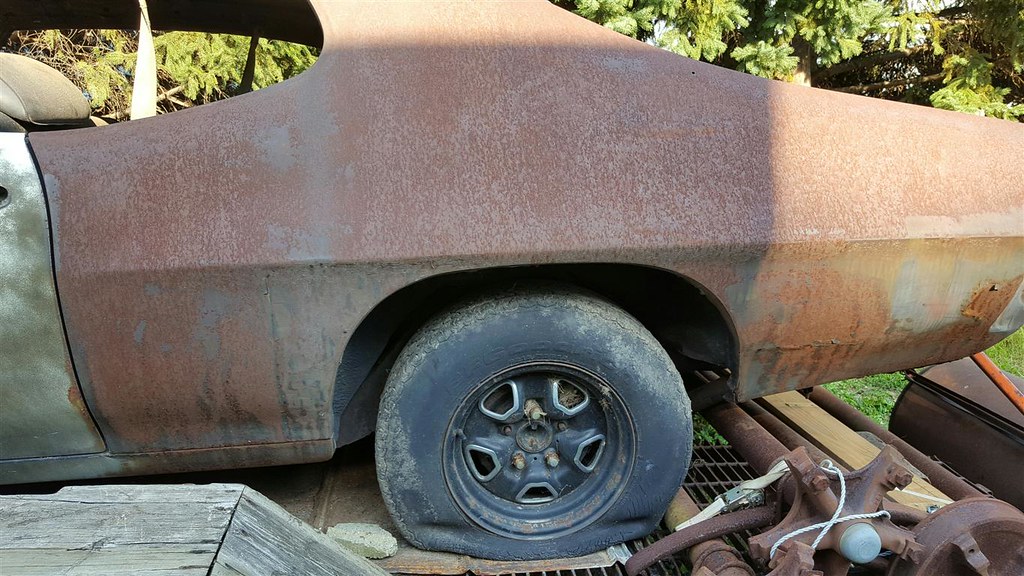


While talking with the owner, and after talking with my uncle about it afterward, we found out that the car belonged to a different person, but had it at this guy's property to have him work on it, as well as serve as collateral for a debt he owed him. Sadly, the owner of the car passed away many years ago, and for about ten years since then, the car set on a utility trailer outside in the elements, leaving many panels on the car that weren't touched with primer to rust over. Despite the rust that accumulated on the car, it was still VERY solid, and we thought it would serve as a very suitable base for the project.
On July 3rd, 2017, we made a deal with the then owner of the car, and he sold it to us for a few hundred more than my parents wanted to spend on it, with me throwing in some cash to make up the difference. He pulled the engine, a 1966 421, and 4-speed trans out of it, as was part of the deal, and we loaded it up on the trailer to take it back home.
But that wasn't all that came with it: There was a treasure trove of parts that ended up coming with the car, from several glove boxes to several sets of interior panels, even all of the glass, a fiberglass nose and a complete 1972 LeMans front end!

It seemed that the only things that were missing would be an engine, headliner, and radio, among some other odds and ends as we piled everything together in the car for the return trip:
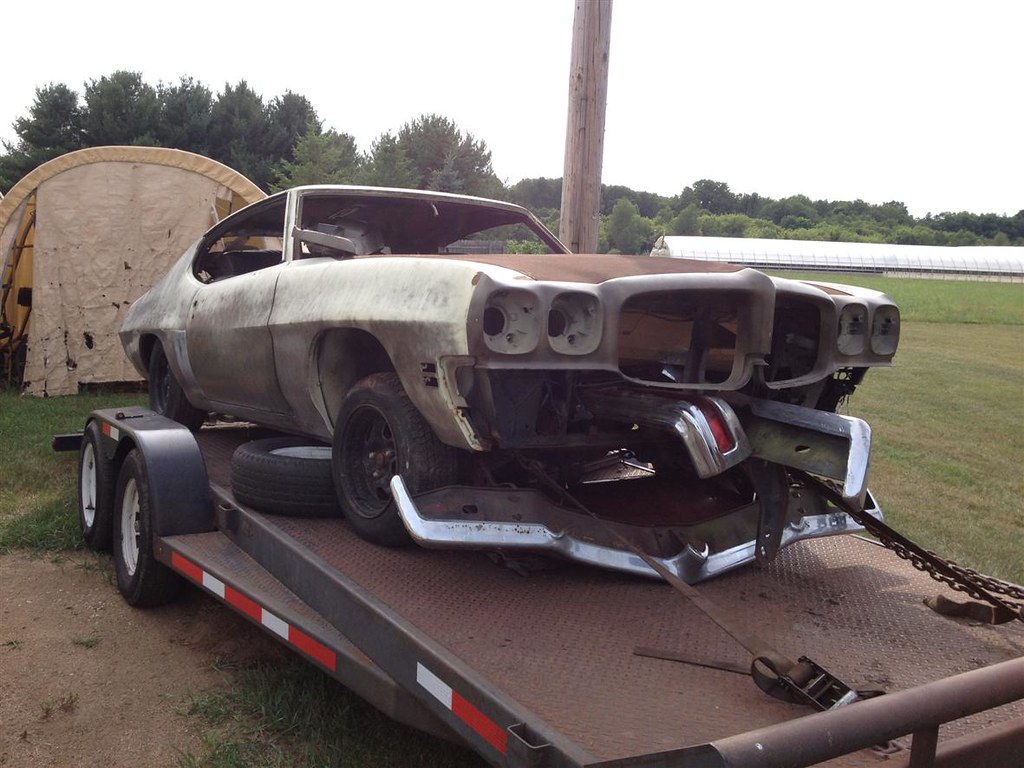
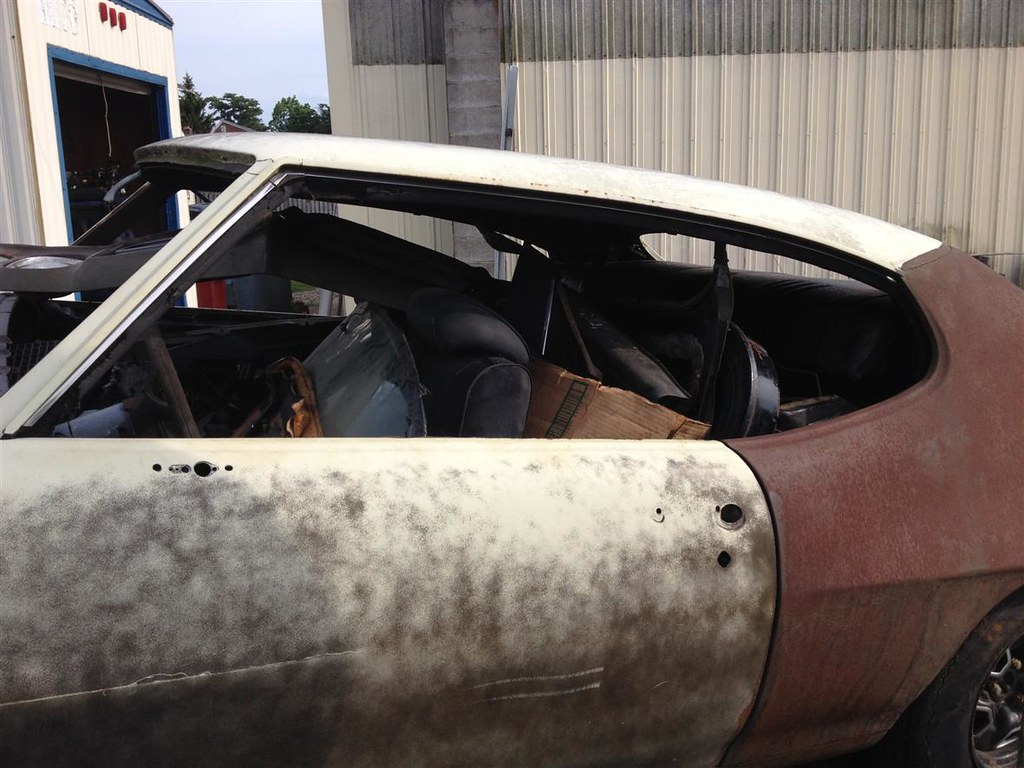
After getting it home, it didn't take long for me to start removing the rust from the hood and the quarter panel, as well as some other spots along the body using something you may have heard of: vinegar and old clothes.
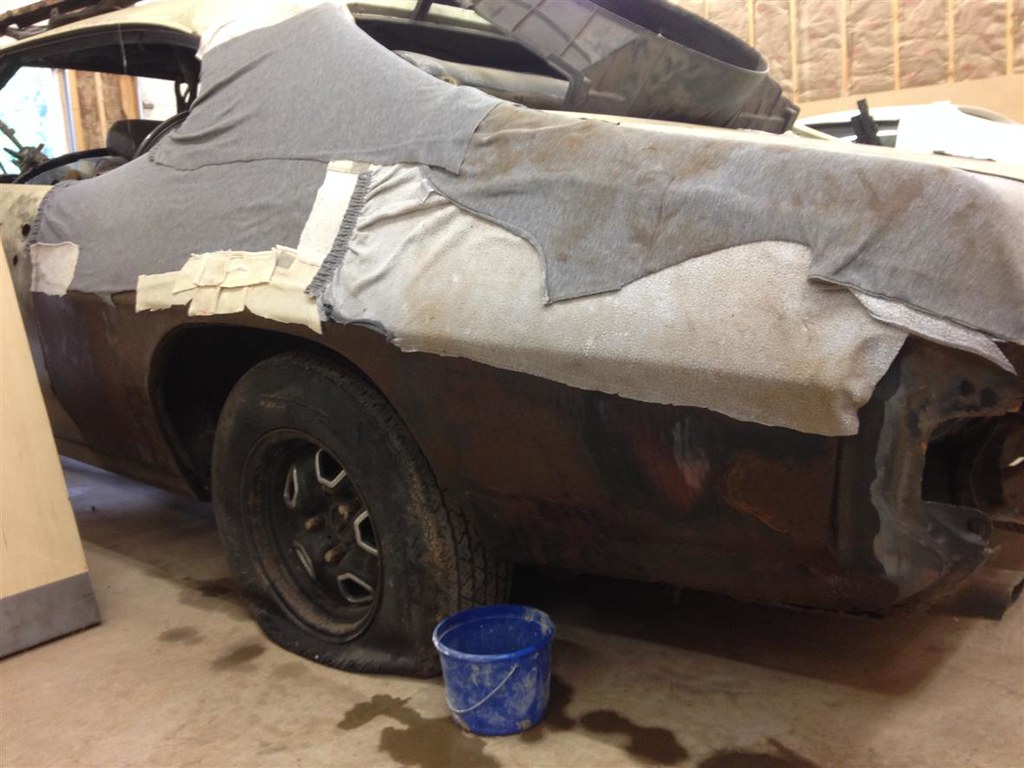
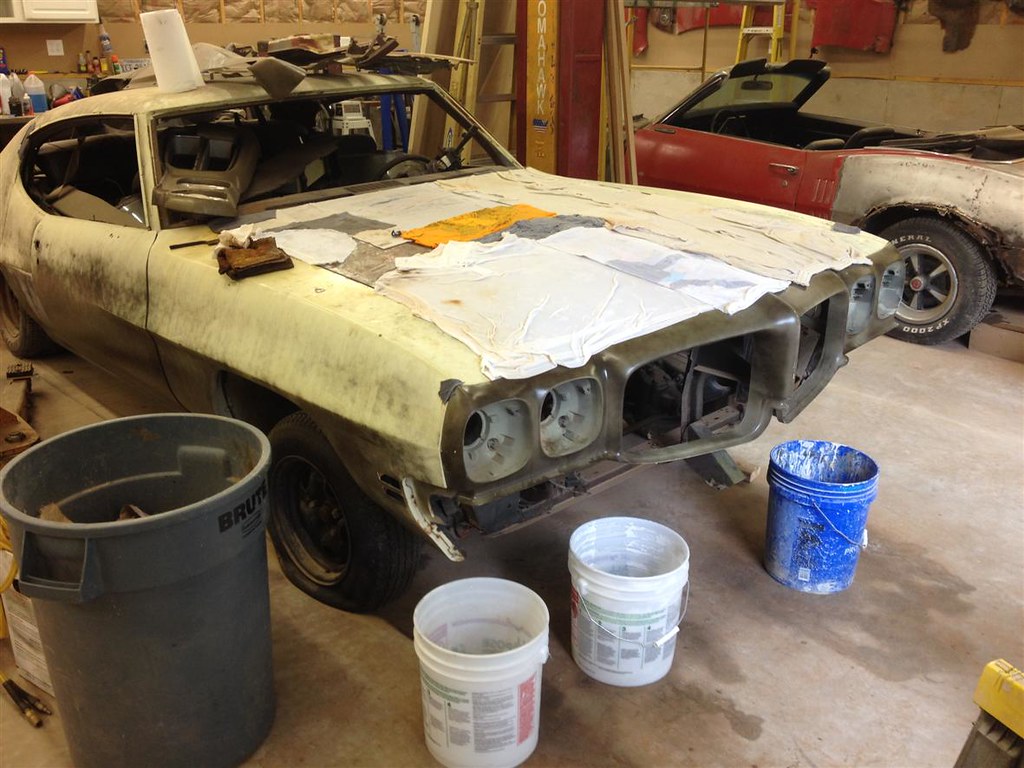
With having the clothes soaked in vinegar on top of the hood and the quarter panel, the rust started draining off of the car:
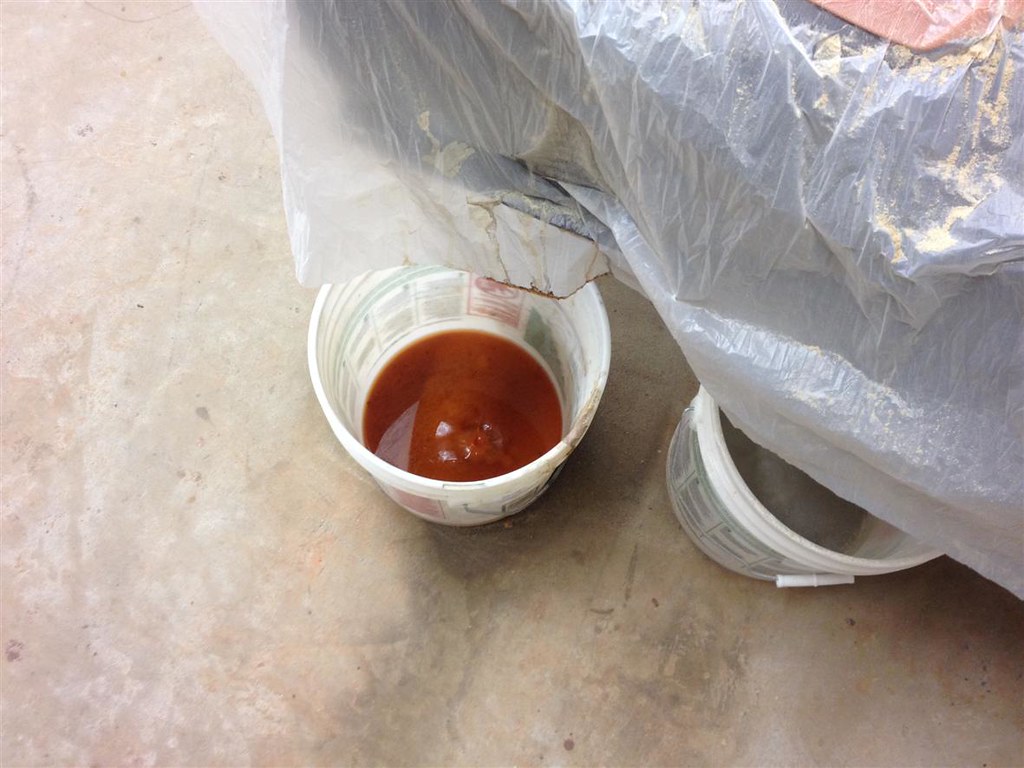
After letting it soak in this manner for a whole day, the clothes were removed, and a wire brush and some of the rust-infused vinegar caught in the buckets were used to scrub the whole hood and quarter panel down:

And the process was repeated a second time:

And a third time:

[/url]
Things came along a little slower on the quarter panel, as it was far steeper than the rather level hood, and harder to keep the vinegar soaking in the clothes, as it wanted to drain out quickly. This is how it looked after the third time of soaking it, right after peeling the clothes off:

And after some scotch-pad and some wire brush:
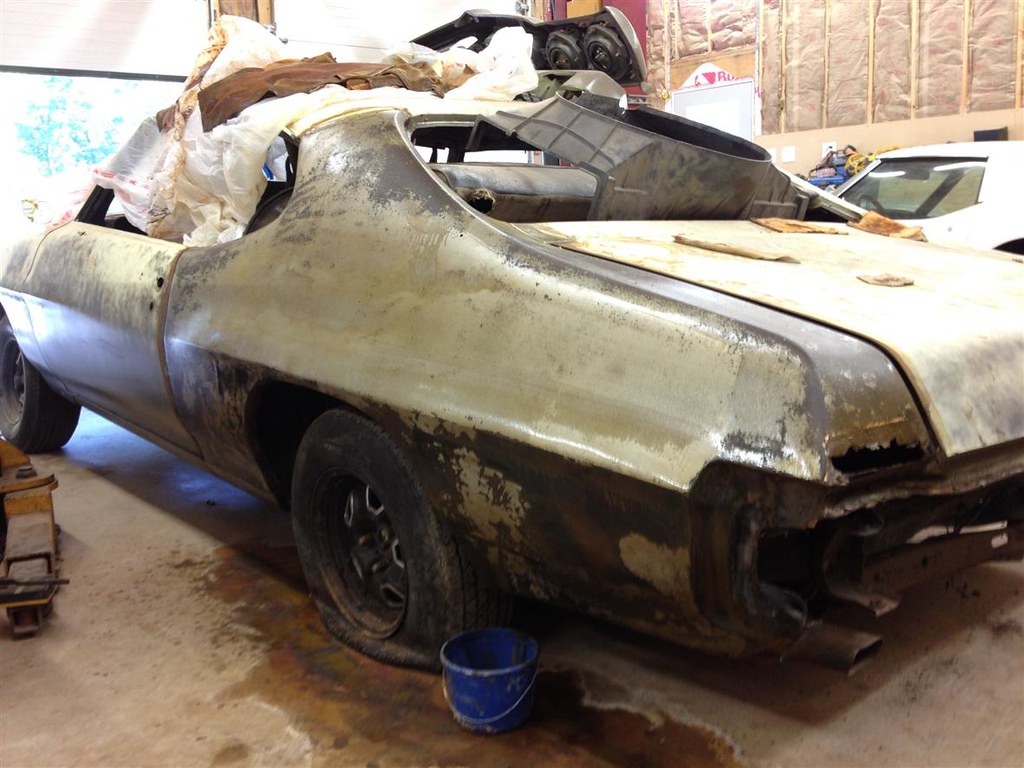
Soon after this process was undertaken, Dad and I built some shelves on the upper level of the garage, where we could store the pile of parts that came with the car, along with the parts he had for the cars he was working on:

Up to this point, we had been led to believe that this car was a run-of-the-mill T-37. Thankfully, though, my hand was stayed from the sawzall and other cutting tools to start modifying the car to what I wanted it to be, as my plan was to "restore" it to driving condition and be able to enjoy it while I saved up the truckload of money that would be needed for the parts I wanted to throw at it later down the road.
And it was a blessing that my hand was stayed for any major modification, because while I rummaged through the parts to organize them for storage, I came across a potentially project-changing badge:
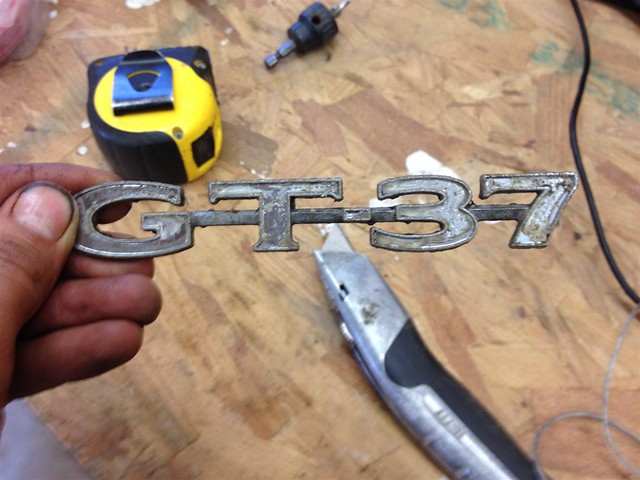
And it fit perfectly in the holes in the trunklid on the car.
Now I had some research to do.
Soon after going to Norwalk this year, I placed an order with PHS for the information they had on this car, and sure enough:

It was a REAL 1971 GT-37!
And not only that:
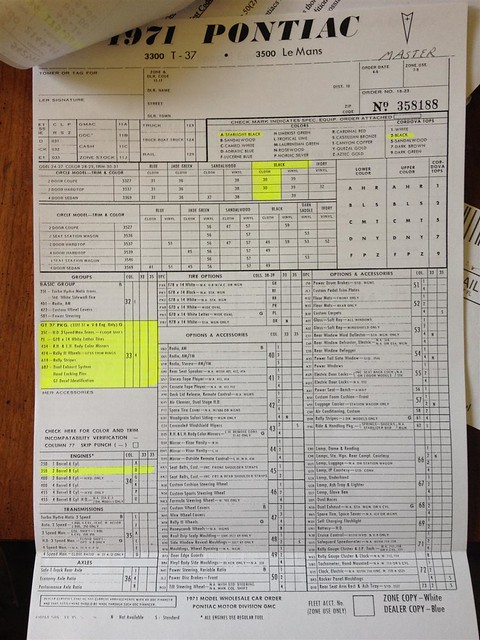
It was a Triple-black car, with a black cordova top, and the side stripes! How beautiful this car must have looked when it came out from the dealer!
Right then and there, the project's end goal changed from a modernized pavement pounder to a full-blown restoration.
And the rust removal didn't stop in the meantime:
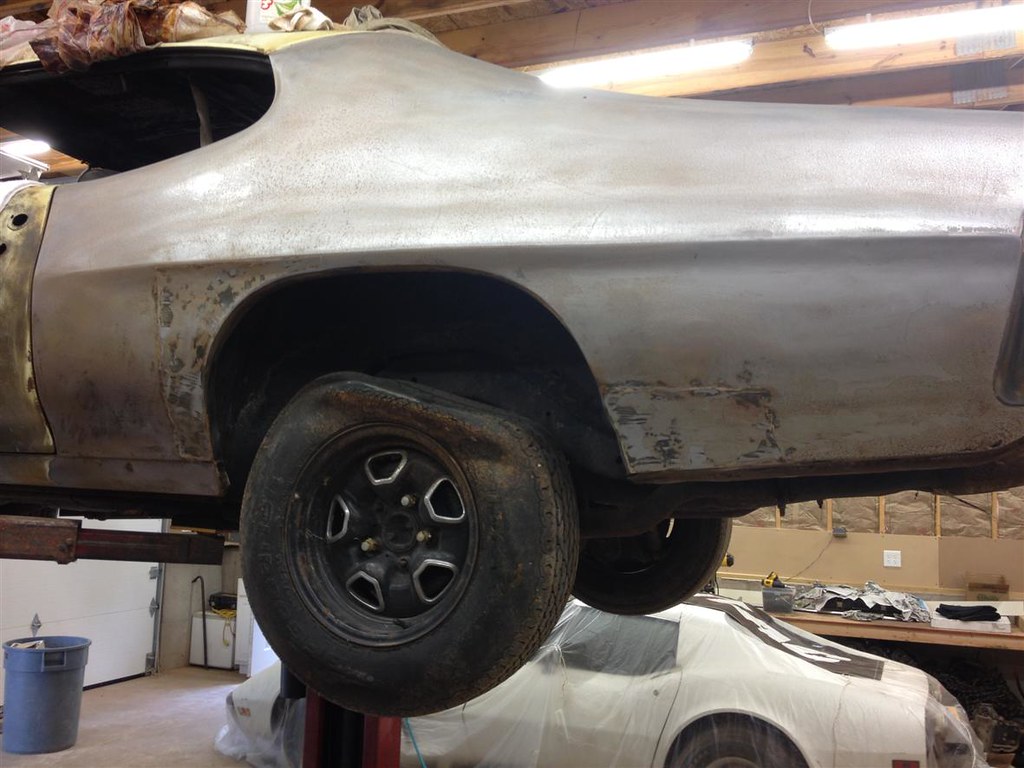
I gave most of the rust spots on the car a healthy dose of love with a DA sander my dad had just gotten for projects like this:

And very soon, after several hours of sanding and five cans of Rust-Oleum Rust Reformer:

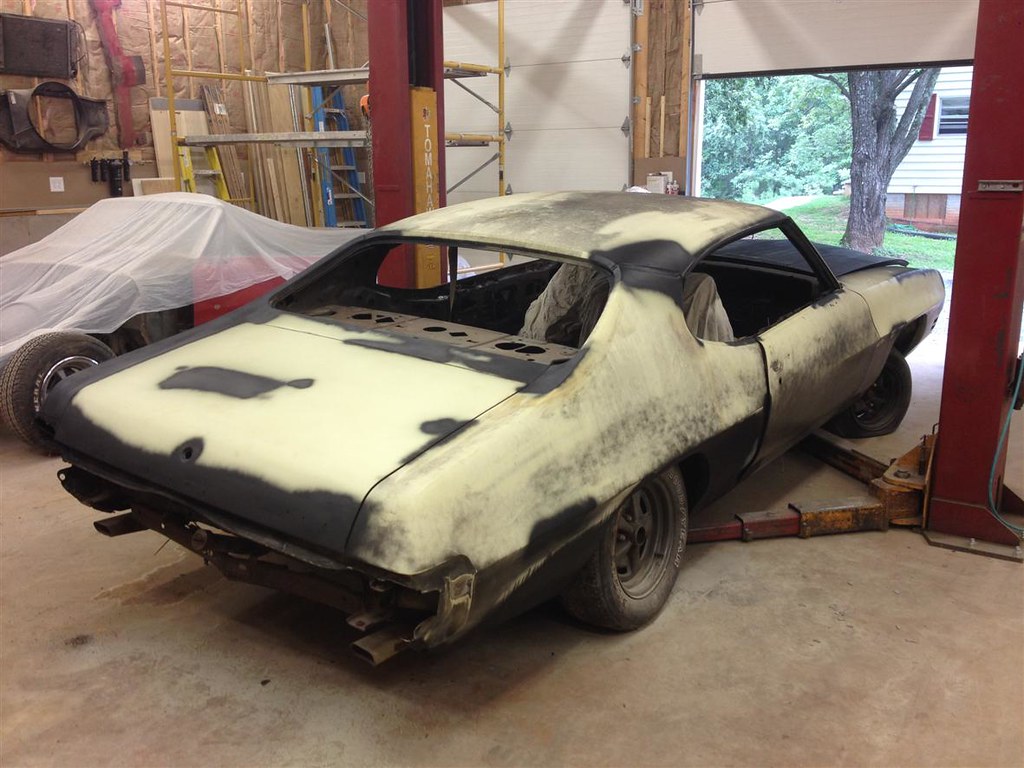

The car's bare metal spots became protected from further harm while I continued some work that needed to be done on my daily-driven 2001 Grand Prix.
Now, the list of things needed to get this car closer to putting it back together is to repair the floorpans and the trunk pan, as there are a few patches of rust in both areas. After that, and some patching and re-working of the patches that were done before, as seen in the photos of the bare metal on the quarter panel, the car will be really close to being put back together in driveable shape!